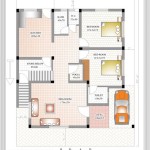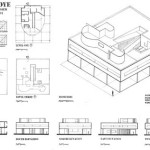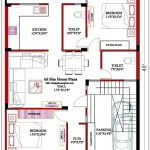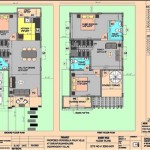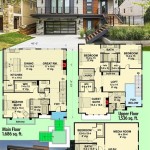Ranch House Plans: A Timeless Architectural Style
Ranch house plans represent a distinctly American architectural style that gained immense popularity throughout the mid-20th century. Characterized by their single-story construction, sprawling layouts, and close-to-the-ground profiles, ranch houses offer a unique blend of practicality, affordability, and casual living. Their enduring appeal stems from their adaptability to various lifestyles and lot sizes, making them a relevant choice for homeowners even today.
The origins of the ranch house can be traced back to the Spanish Colonial architecture of the American Southwest. Haciendas, with their low-slung silhouettes and open floor plans, served as inspiration for the early ranch homes that emerged in California during the 1930s. These early iterations often featured stucco or adobe exteriors, red tile roofs, and courtyards, reflecting their regional influences.
Following World War II, the ranch house style experienced a surge in popularity across the United States, fueled by the burgeoning suburbs and the desire for affordable, easily constructed housing. The simplicity of the ranch design, coupled with its suitability for mass production techniques, made it an ideal choice for developers catering to the growing demand for housing.
Key architectural features define the ranch house style. The single-story layout eliminates the need for stairs, creating a convenient and accessible living environment. Long, low rooflines, often with wide eaves, contribute to the characteristic horizontal emphasis. Attached garages, frequently positioned at the front of the house, became a standard feature, reflecting the growing prevalence of car ownership.
Open floor plans are a hallmark of ranch house design. The connection between living spaces, such as the living room, dining area, and kitchen, creates a sense of spaciousness and facilitates interaction among family members. Large windows, often sliding glass doors, enhance the connection to the outdoors and maximize natural light. Patios, decks, and other outdoor living spaces are common additions, blurring the lines between indoor and outdoor living.
Variations within the ranch house style emerged over time to cater to different regional preferences and evolving tastes. The California ranch, true to its origins, retains elements of Spanish Colonial influence. The suburban ranch, the most common type, features a more simplified design with less ornamentation. The split-level ranch incorporates a partially raised or lowered level, adding visual interest and creating distinct zones within the home. The raised ranch elevates the main living area above the ground level, often incorporating a finished basement or garage underneath.
Ranch house plans offer numerous advantages for homeowners. Their single-story design promotes accessibility and ease of movement, making them suitable for individuals of all ages and abilities. The open floor plans foster a sense of community and facilitate interaction, while the connection to outdoor living spaces enhances the overall living experience. Ranch homes are typically situated on larger lots, providing ample space for yards, gardens, and other outdoor amenities.
Adaptability is another strength of the ranch house plan. The simple, straightforward design lends itself to customization and expansion. Homeowners can easily add rooms, modify existing spaces, or update finishes to meet their changing needs and preferences. This inherent flexibility allows ranch houses to evolve with the times, ensuring their continued relevance in the housing market.
In terms of construction, ranch houses are generally more economical to build than multi-story homes. The simpler rooflines and foundations require less material and labor, resulting in lower construction costs. The single-story layout also simplifies plumbing and electrical systems, further reducing expenses. These cost-saving features contribute to the affordability of ranch homes, making them an attractive option for budget-conscious buyers.
While ranch houses offer numerous benefits, they also present certain challenges. Their sprawling layouts can lead to increased heating and cooling costs, especially in climates with extreme temperatures. The single-story design can also limit privacy, as bedrooms and living spaces are often situated on the same level. The large footprints of ranch homes require larger lots, which may not be readily available in densely populated areas.
Despite these potential drawbacks, the enduring popularity of ranch house plans testifies to their practicality, adaptability, and timeless appeal. Their simple yet elegant designs, combined with their affordability and ease of maintenance, continue to resonate with homeowners seeking a comfortable and functional living environment. Whether a classic suburban ranch, a split-level design, or a contemporary reinterpretation, the ranch house remains a relevant and desirable choice in the ever-evolving landscape of residential architecture.

Affordable Ranch House Plan 1453

House Plan 45467 Ranch Style With 1680 Sq Ft 4 Bed 2 Bath

Tierney Ranch House Plans Luxury Floor

Silverbell Ranch House Plan Farmhouse Archival Designs

House Plan 51987 Ranch Style With 3366 Sq Ft 4 Bed 3 Bath 1

Affordable Ranch House Plan Suited For A Variety Of Lots 4676

1400 Sq Ft Simple Ranch House Plan Affordable 3 Bed 2 Bath

House Plan 40112 Quality Plans From Ahmann Design

House Plan 85004 Quality Plans From Ahmann Design

House Plan 1020 00255 Ranch 1 520 Square Feet 3 Bedrooms 2 Bathrooms Floor Plans One Story

